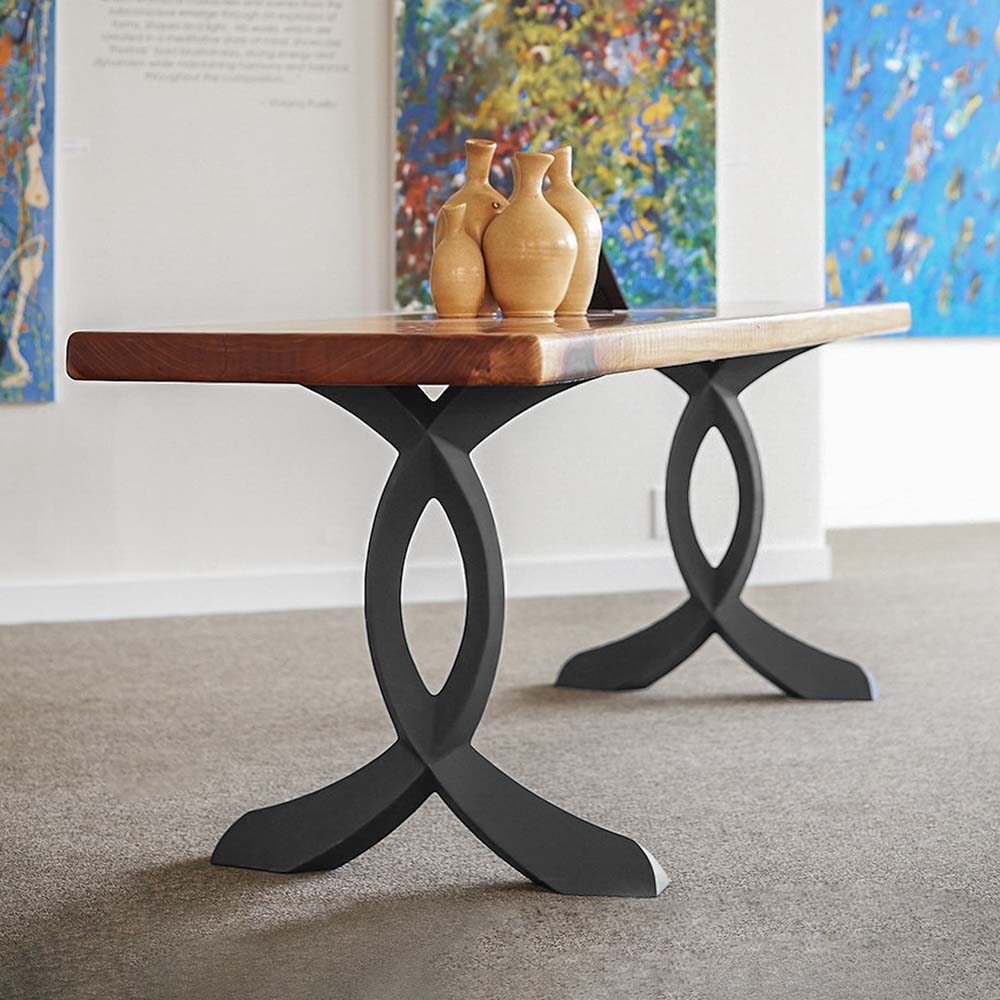Choosing the Perfect Table: What Styles Work Best for Your Home?
Choosing the ideal dining table for your home can be a nuanced procedure that stabilizes aesthetic appeals and capability. To navigate these options successfully and locate a table that really matches your home, take into consideration the following aspects in detail.
Examining Your Room
Reviewing the dimensions and design of your eating location is a vital initial step in selecting the ideal eating table. Begin by gauging the size and size of the area, making up doorways, windows, and other architectural features that could influence table placement. This guarantees that your table not only fits however likewise enables for comfortable motion around it.
Think about the variety of people you usually amuse. A table must suit your family's day-to-day requirements while using adequate versatility for occasional guests. Generally of thumb, assign at the very least 24 inches of table size each to make certain a comfy dining experience.
It's likewise important to maintain appropriate clearance around the table. Preferably, there must go to least 36 inches between the table side and walls or other furnishings, making it possible for simple gain access to and movement. For rooms where chairs with arms or added storage units like buffets are entailed, boosting this clearance to 48 inches is recommended.
Lighting and ambience play substantial functions as well. Ensure that your eating table lines up with existing lighting components or prepare for sufficient lights options. This comprehensive spatial analysis assurances that your table not just fits physically yet additionally integrates with your area's general capability and visual.
Popular Table Styles

Standard table commonly include elaborate details, curved legs, and rich timber coatings, stimulating a sense of timeless elegance. They are perfect for homes with timeless style or those aiming to include a touch of class to their dining area.
Modern dining tables prioritize simpleness and tidy lines, typically integrating products like glass and steel. These tables are optimal for contemporary spaces, giving a streamlined and clean look that enhances minimal design philosophies.
Rustic eating tables, on the other hand, emphasize all-natural materials and a handcrafted look - dining room table legs. They typically feature redeemed wood and a troubled surface, creating a cozy and inviting atmosphere. These tables function well in farmhouse-style homes or those seeking a comfy, organic feeling
Industrial dining tables combine basic materials such as metal and timber, frequently showcasing a practical aesthetic. This design is appropriate for loft spaces or metropolitan rooms, adding a touch of sturdy appeal and resilience to the eating experience.
Each style uses distinct benefits, making it vital to pick one that aligns with your home's total design and your individual choices.
Material Selections
When selecting a table, the selection of material plays a critical function in establishing both the table's aesthetic appeals and capability. Wood, metal, glass, and composite products each offer distinct advantages and challenges, making it critical to align the product with your home's style and lifestyle requirements.
Timber is a classic and versatile choice, readily available in varieties such as oak, walnut, and mahogany. Known for its toughness and heat, wood complements both standard and modern insides. It calls for normal upkeep to stop scratches and bending.
Metal tables, commonly crafted from stainless-steel, light weight aluminum, find out here now or functioned iron, are praised for their modern appeal and toughness. They are especially fit for commercial or minimal setups however can be susceptible to damages and might really feel chilly to the touch.
Glass table bring an air of sophistication and visibility, perfect for smaller sized areas as they produce an impression of more space. While simple to clean, glass can be vulnerable to smudges and requires careful taking care of to stay clear of chips and splits.
Composite products, such as MDF and plywood, offer affordable and adjustable services, though they may do not have the long life of all-natural materials. Selecting the right material guarantees your eating table is both a functional possession and an aesthetic joy.
Sizes And Shape Considerations
After figuring out the ideal material for your table, the next consideration is Learn More selecting the ideal sizes and shape to fit your area. The shape of the table dramatically influences the space's aesthetic and capability. Rectangle-shaped tables, the most usual form, are optimal for bigger rooms and can suit a greater number of visitors. They likewise permit for a more formal eating experience. Alternatively, rounded tables cultivate a feeling of affection and Get the facts are outstanding for smaller sized eating locations, encouraging discussion by eliminating corners and making everybody feel equally included.
As a regulation of thumb, designate at the very least 24 inches of table width per person to make sure comfy dining. Additionally, consider the table's clearance space: there need to be at least 36 inches in between the table edge and the walls or other furnishings. Prolonging tables provide adaptability if you frequently host larger events, offering added seats when required without occupying added area daily.
Matching Your Style
Picking a table that harmonizes with your existing style is crucial in producing a cohesive and welcoming area. Begin by evaluating your existing indoor design style, whether it be modern, standard, rustic, or eclectic. The eating table ought to complement the total aesthetic, not take on it. For circumstances, a sleek, minimal table with clean lines is ideal for a modern home, while a vintage, ornate table matches a much more traditional setting.
If your design features cozy tones and all-natural products, take into consideration a wooden table to enhance the organic feel. On the other hand, a glass or steel table might be extra appropriate in a space dominated by amazing shades and commercial components.
A rough-hewn, recovered wood table can add personality to a rustic area, while a sleek marble surface can elevate an elegant dining location. A well-matched eating table not only enhances aesthetic charm however also improves the general dining experience.

Conclusion
Selecting the optimal dining table requires cautious consideration of space, style, materials, form, and dimension. Typical tables enhance timeless insides with abundant wood surfaces, while modern tables suit contemporary setups via glass and steel.
 Tia Carrere Then & Now!
Tia Carrere Then & Now! Michael J. Fox Then & Now!
Michael J. Fox Then & Now! Rachael Leigh Cook Then & Now!
Rachael Leigh Cook Then & Now! Tonya Harding Then & Now!
Tonya Harding Then & Now! Bernadette Peters Then & Now!
Bernadette Peters Then & Now!